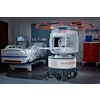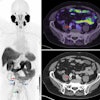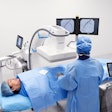
NEW YORK (Reuters Health), Aug 20 - Two newly recognized biomarkers, intestinal fatty acid-binding protein (I-FABP) and liver fatty acid-binding protein (L-FABP), can signal severe abdominal injury in trauma patients, according to a July report in Academic Emergency Medicine.
Low levels of both markers "uniformly excluded serious abdominal injury" in the study cohort, said lead author Borna Relja from Johann Wolfgang Goethe University Frankfurt am Main and colleagues.
When elevations of these markers do occur, they last no more than four to six hours. But both markers were elevated in 87% of patients with serious or severe abdominal injuries, according to the authors.
Their paper reports on plasma levels of I-FABP and L-FABP in 52 trauma patients with no abdominal injury, 41 patients with serious or severe abdominal trauma (i.e., Abbreviated Injury Scale score of 3 or higher), nine patients with moderate abdominal injury (AIS score < 3), and 30 healthy volunteers with no abdominal trauma or surgery in the past 24 months.
Median I-FABP levels were 516 pg/mL in the serious/severe abdominal injury group, 154 pg/mL in the moderate abdominal injury group, 207 pg/mL in the no abdominal injury group, and 108 pg/mL in the control group.
Median L-FABP levels followed a similar trend: 135 ng/mL in the serious/severe abdominal injury group, 13 ng/mL in the moderate abdominal injury group, 21 ng/mL in the no abdominal injury group, and 13 ng/mL in the control group.
For both biomarkers, median levels were significantly higher in the severe injury group compared with all the other groups (p < 0.05).
The optimal I-FABP cutoff was 359 pg/mL, the authors say; this yielded 93% specificity and 75% sensitivity for detecting severe abdominal injury. The optimal L-FABP cutoff of 54 ng/mL was 93% specific and 82% sensitive for severe injury.
L-FABP sensitivity for solid organ injuries (80.8%) was superior to ultrasound (31%) and comparable to CT (76.9%).
"These findings are very positive," Relja told Reuters Health by e-mail. "Even the relatively small cohort of patients indicates that these tests are not redundant but complementary."
In particular, Relja said, FABP levels can help identify "small hollow organ injuries, which usually have devastating consequences if missed."
But before FABP testing can transition from a research method to a routine clinical assay, further clinical studies and a commercial assay will be needed, according to Relja.
"The clinical application of FABPs ... requires assay kits with a fast turnaround time and if possible an automatic system," Relja continued. "Currently, there are no standard diagnostic tests for the determination of I-FABP or L-FABP, and the prevalent determination is performed by highly sensitive sandwich ELISA method, which requires approximately 3-4 hours."
By Will Boggs, MD
Source: http://link.reuters.com/zus95n
Acad Emerg Med 2010;17:729-735.
Last Updated: 2010-08-19 13:56:18 -0400 (Reuters Health)
Related Reading
CT can rule out abdominal injuries after blunt trauma in kids, June 10, 2010
Copyright © 2010 Reuters Limited. All rights reserved. Republication or redistribution of Reuters content, including by framing or similar means, is expressly prohibited without the prior written consent of Reuters. Reuters shall not be liable for any errors or delays in the content, or for any actions taken in reliance thereon. Reuters and the Reuters sphere logo are registered trademarks and trademarks of the Reuters group of companies around the world.


















